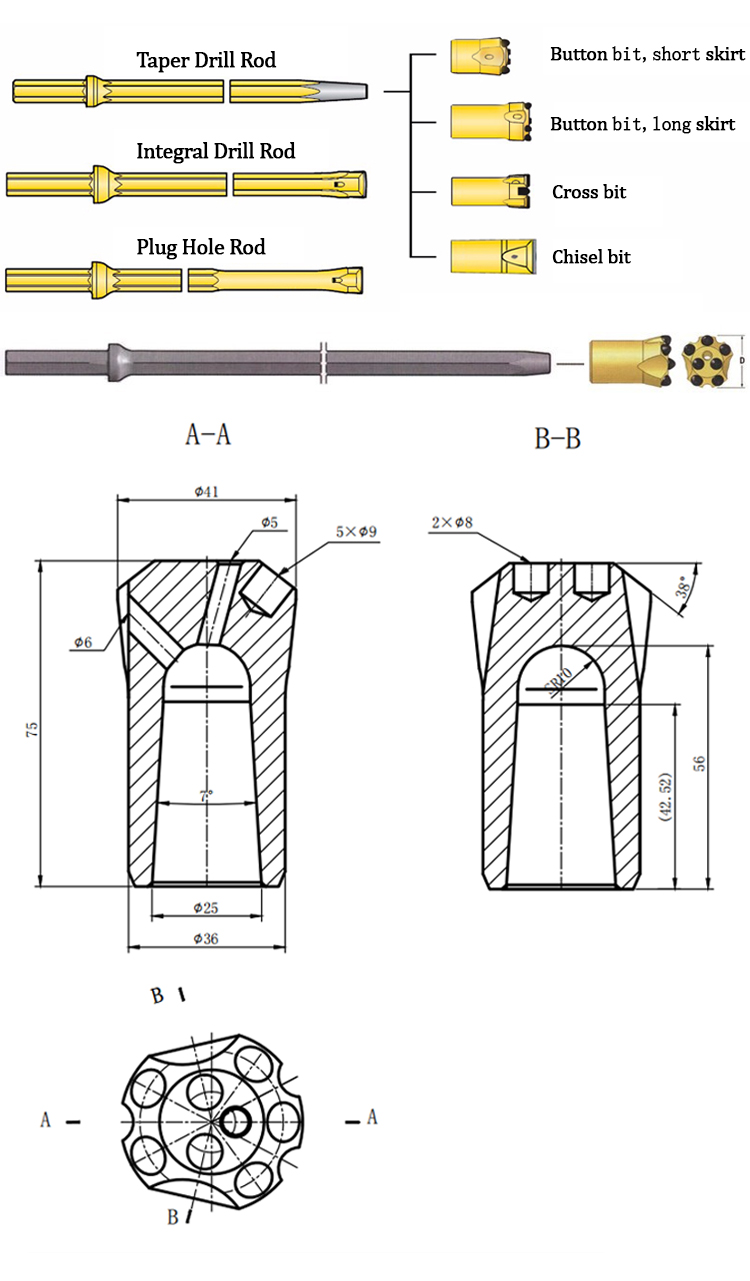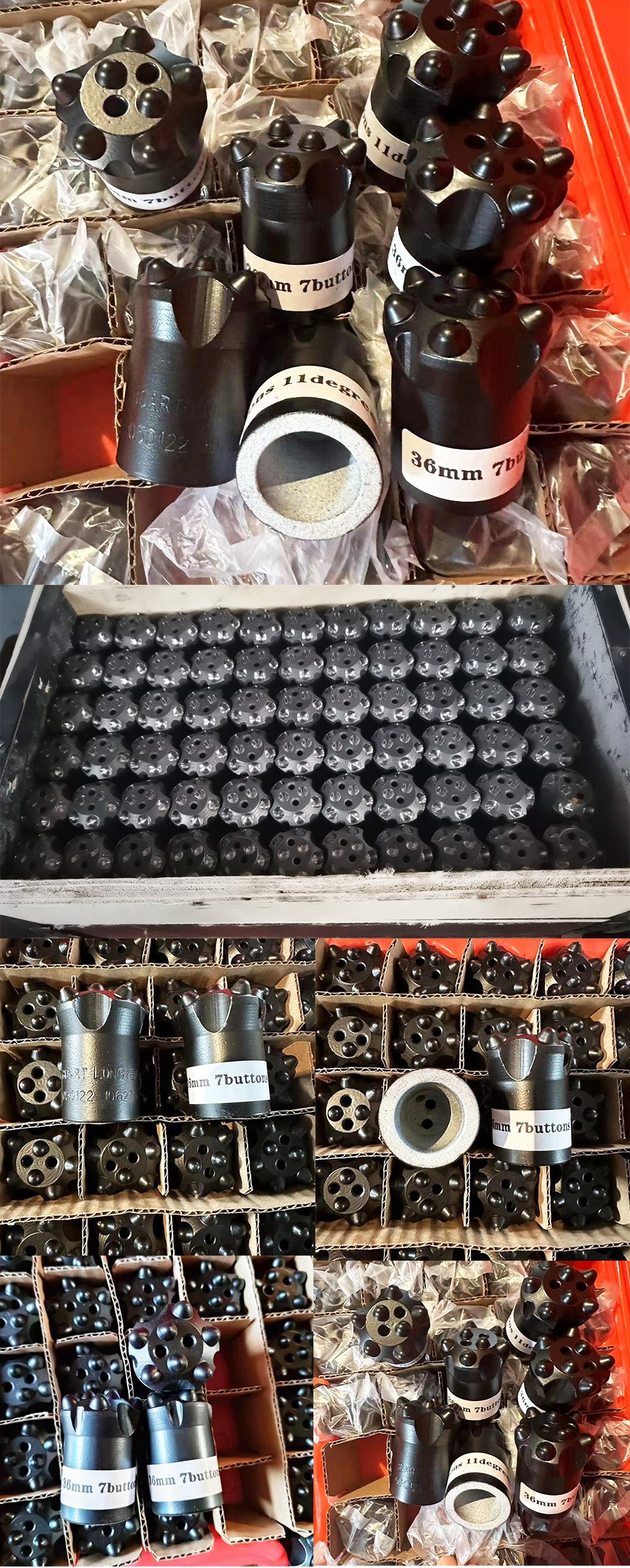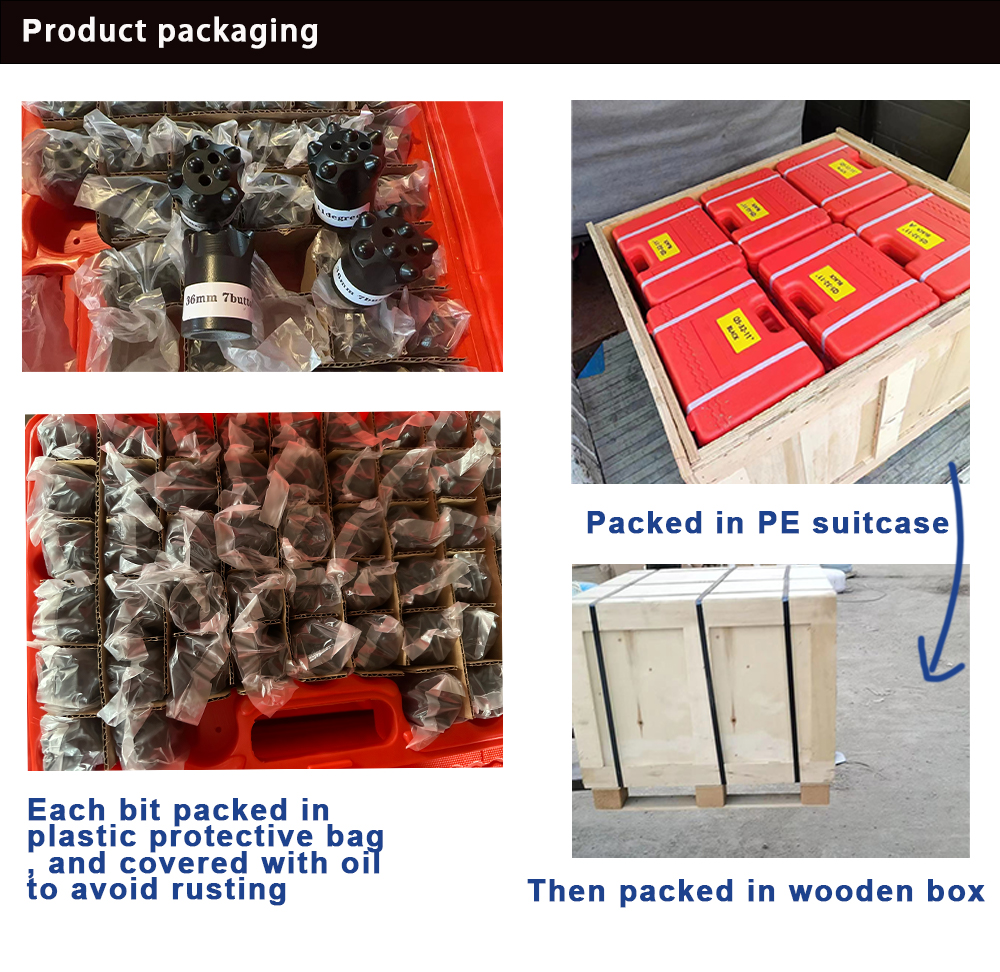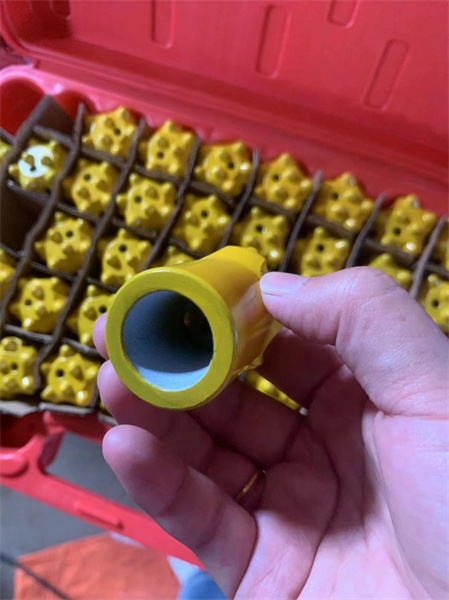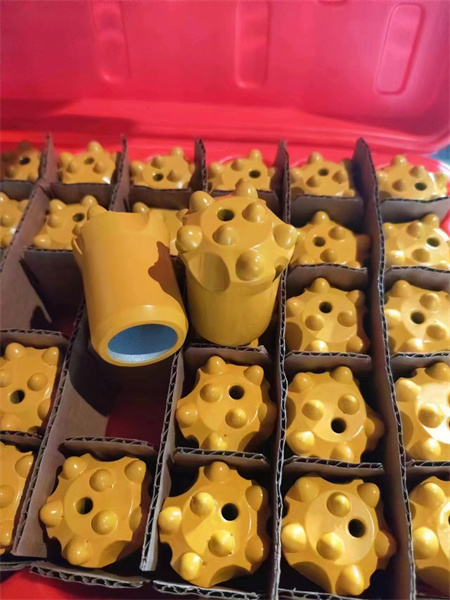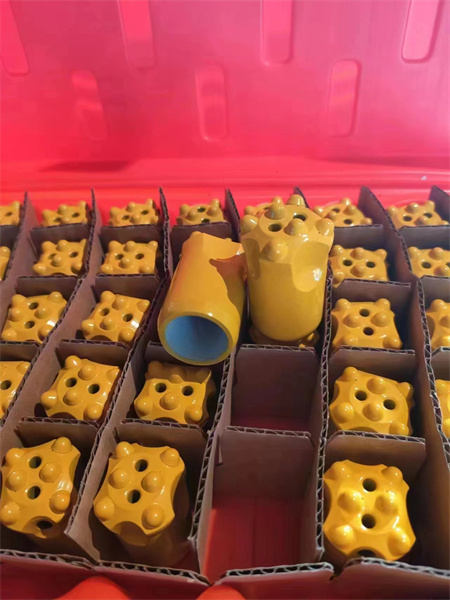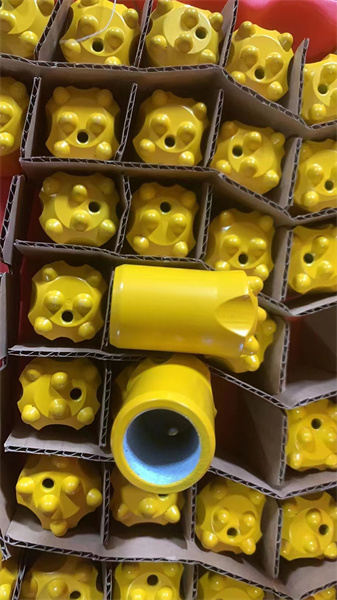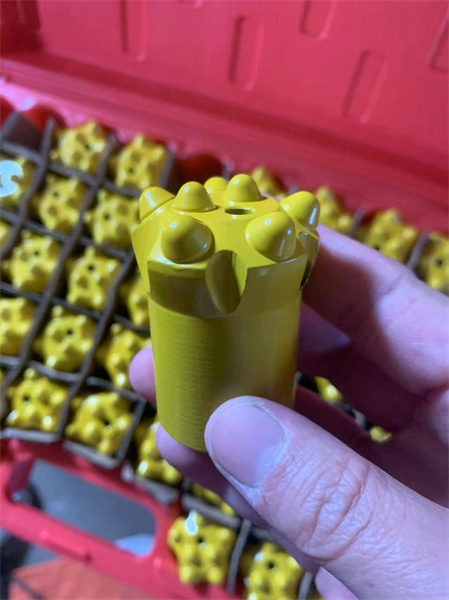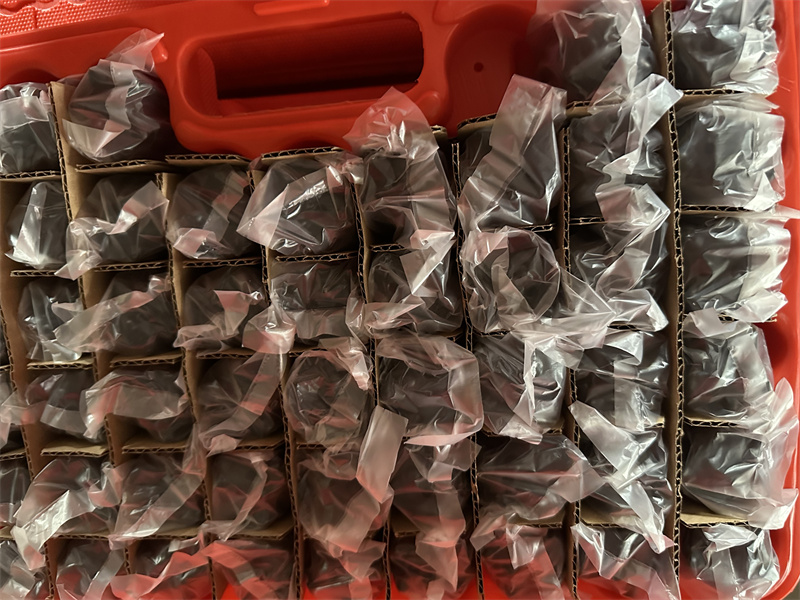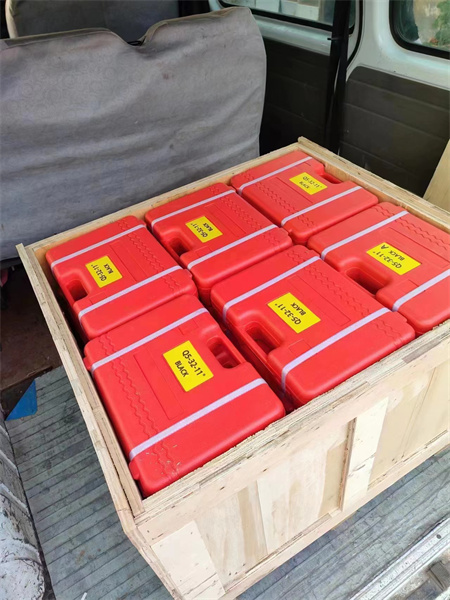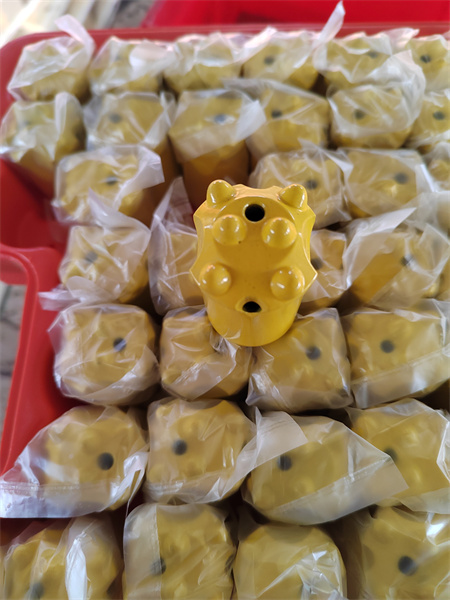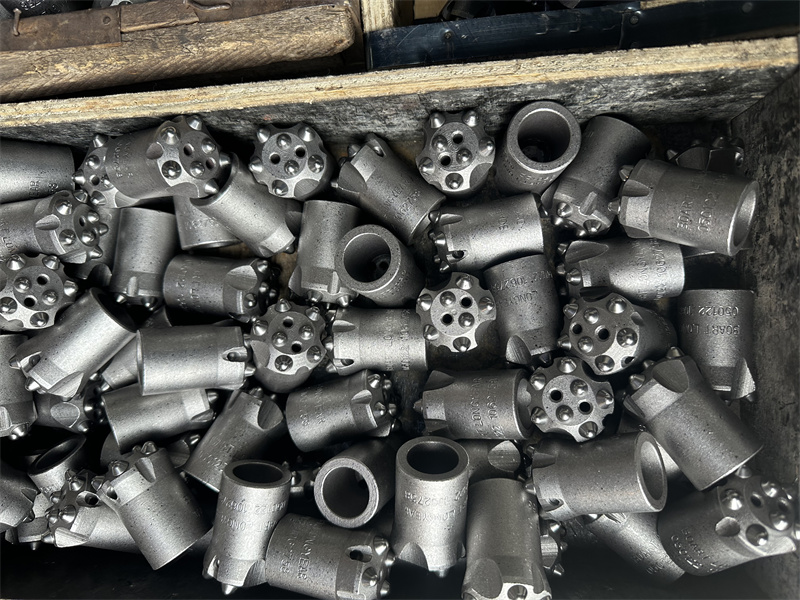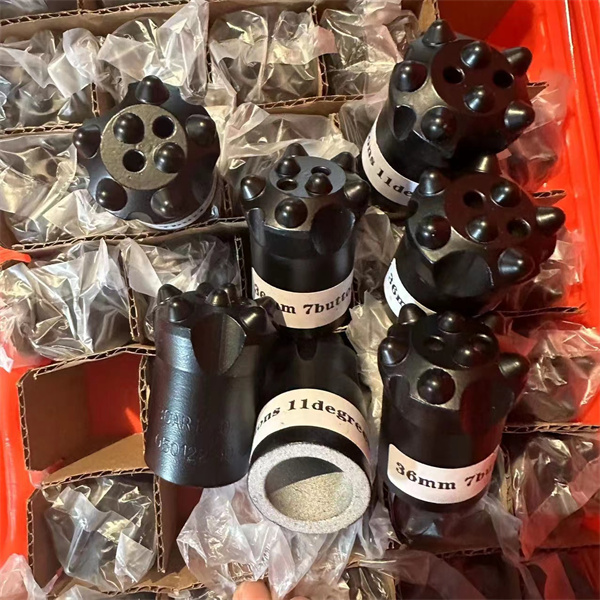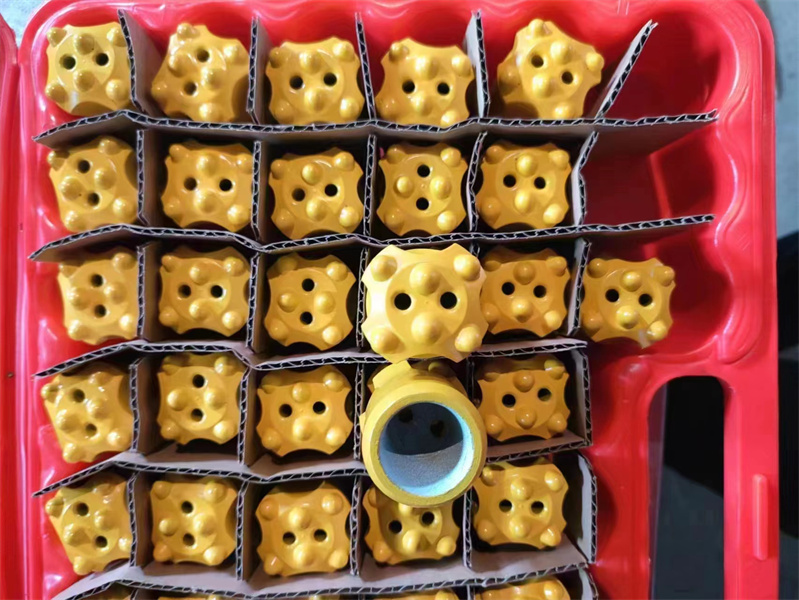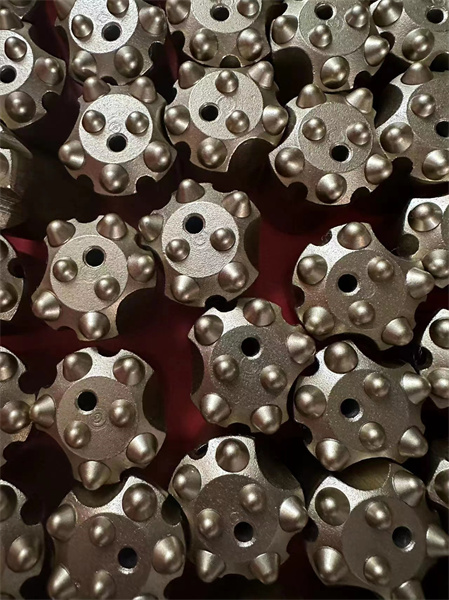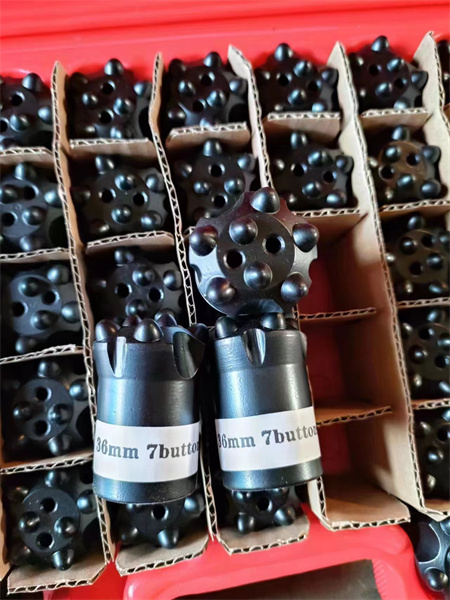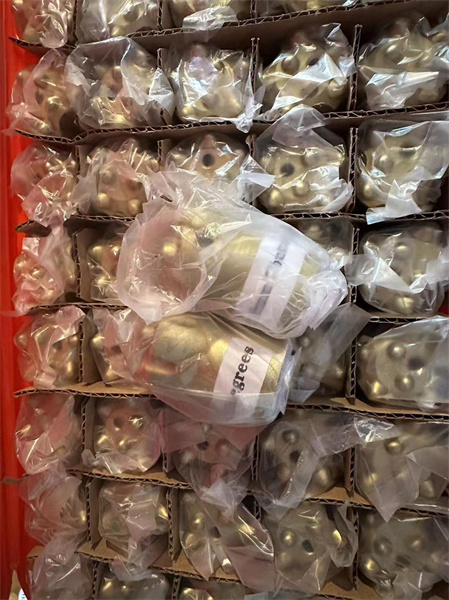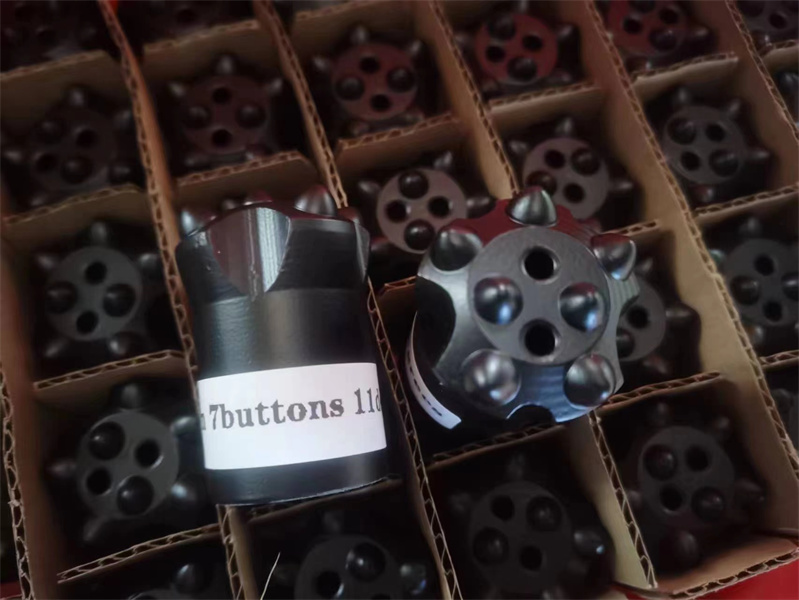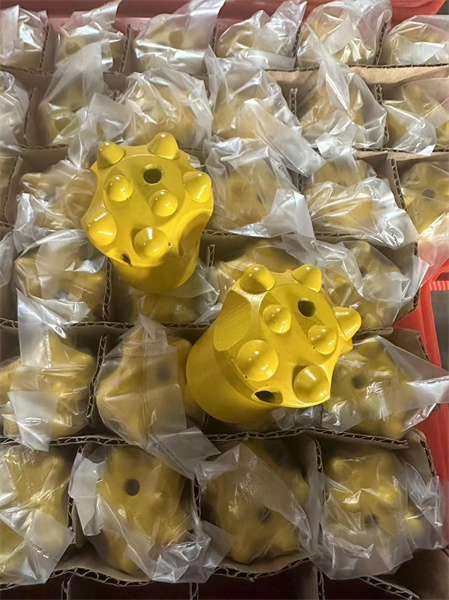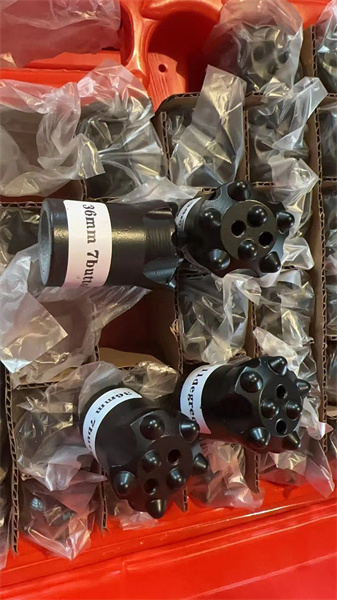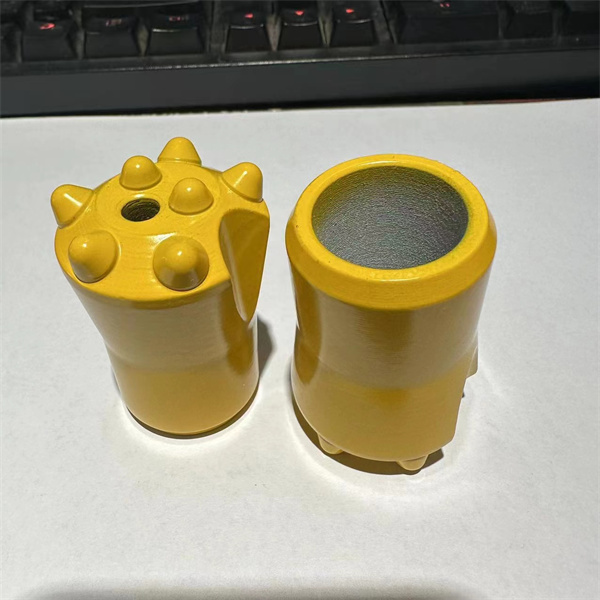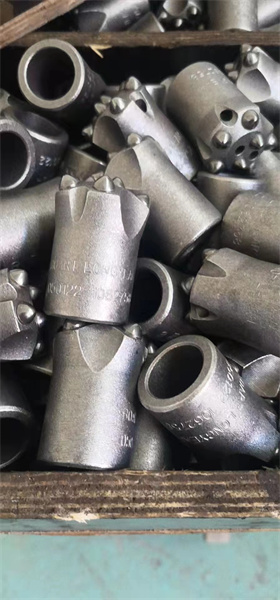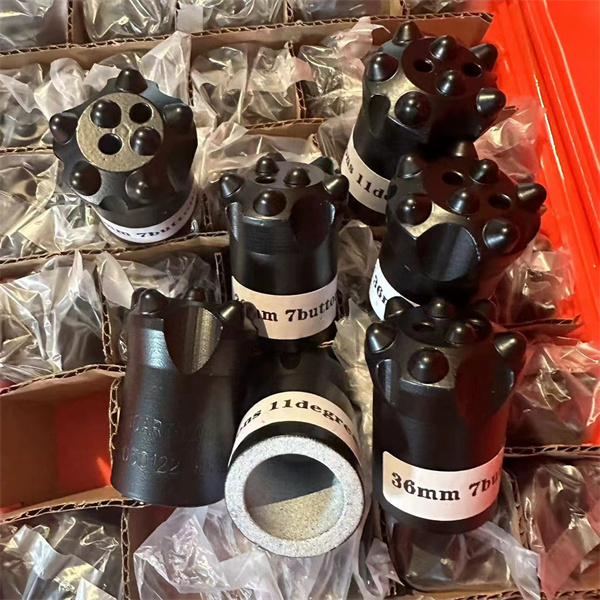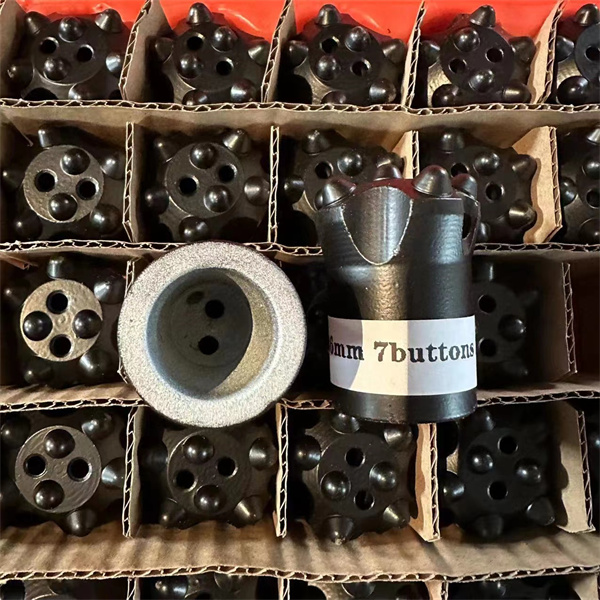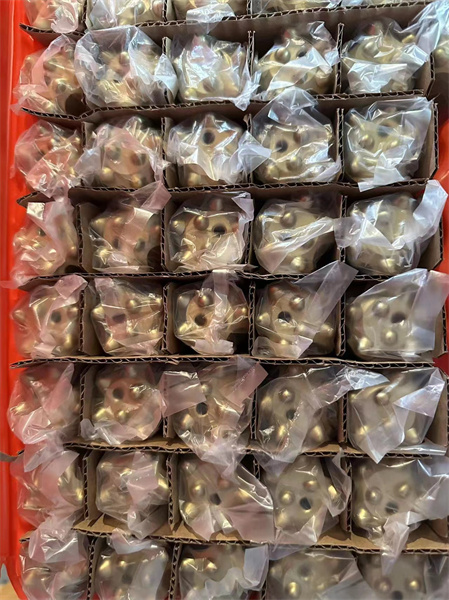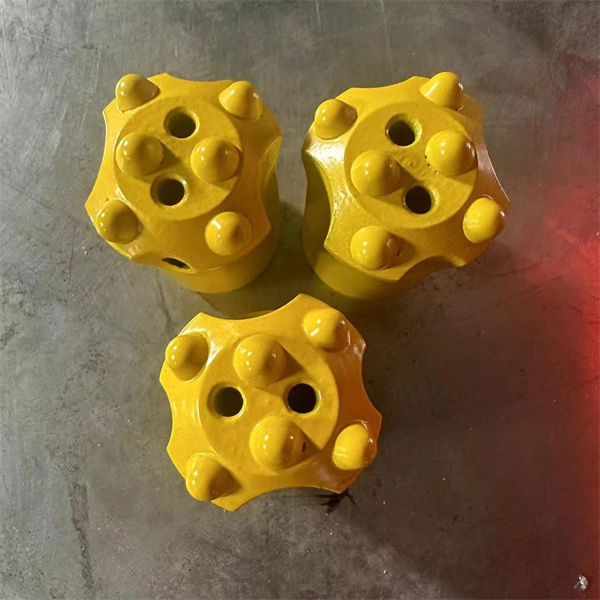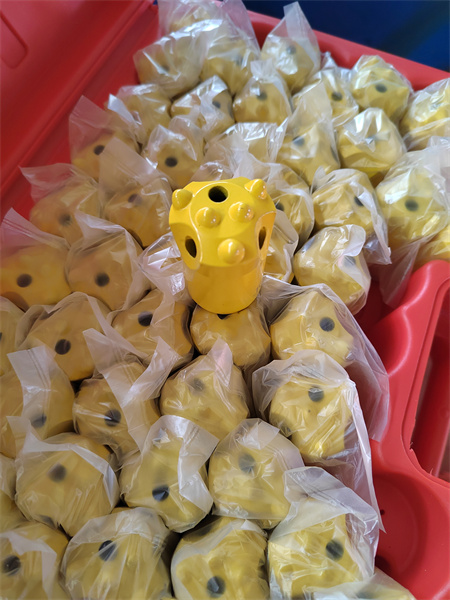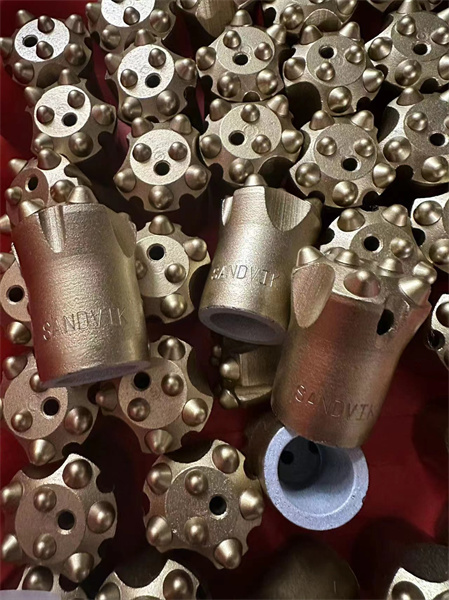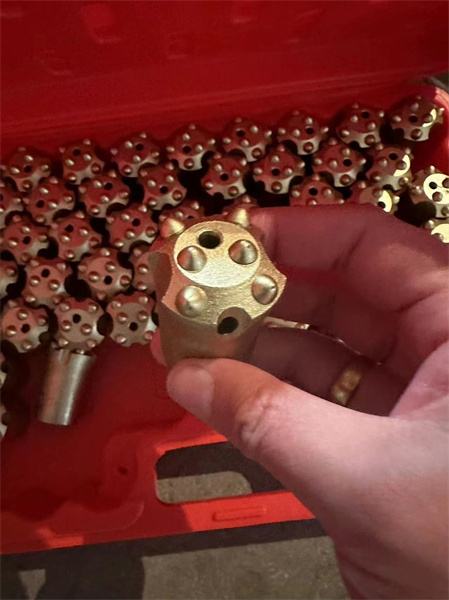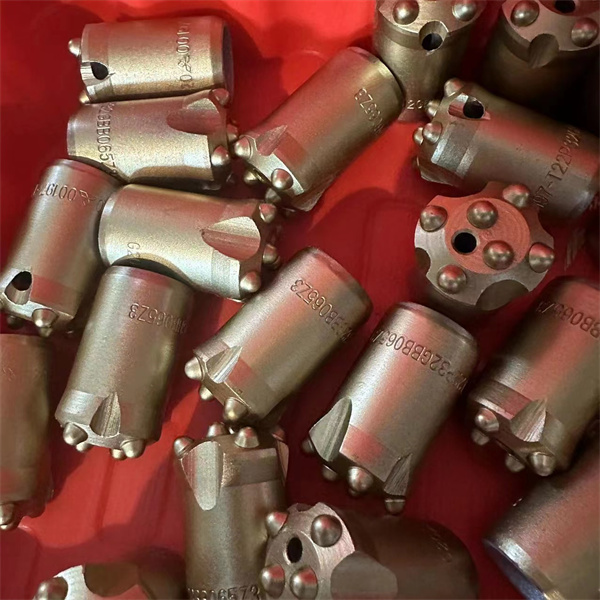Hot selling in Peru OEM Service jack hammer bits 32mm 34mm 36mm 38mm 40mm 42mm for Tunneling
Taper bits, especially Tapered button bits are the most popular tapered drill bits with a wide selection of head diameters from 26mm to 48mm. With carbide buttons hot pressed on the bit skirts, tapered button bits have a good drilling performance and are excellent in longevity.
We manufacture various tapered button bits in different degrees as below:
Bit diameter: 26mm to 60mm;
Tapered degree: 4°, 6°, 7°, 11°, 12°;
Shank sizes: Hex. 19mm, Hex, 22mm and Hex. 25mm;
Carbide type: Chisel type, Cross type, Button type.
Drill bit classification:
tapered button bit drills directly into rock, which is the most vulnerable part in rock drilling tools. It is composed of rock drill carbide inlaid on the drill bit body. According to the shape of the rock drilling alloy used, the drill bits can be divided into the following categories: chip drill bits (mainly one-shaped drill bits, three-edged drill bits, cross-type drill bits, X-type drill bits), cylindrical tooth drill bits (with ball-tooth drill bits, high and low air pressure DTH drill bits), chip-tooth composite drill bits, roller cone drill bits, etc.
Chip bits are used for surface operations, while roller cone bits are mainly used for drilling and exploration. Due to factors such as structure and force, the chip-shaped drill bit has low rock crushing efficiency, slow footage, large amount of alloy, and is prone to waste. Among them, the in-line drill bit accounts for more than 80%, which is mainly used for small hole and shallow hole rock drilling. The cross-type and X-type drill bits are mainly used for tough medium and deep holes. Moreover, the maximum diameter is limited due to structural and stress reasons. Generally, the diameter of the in-line drill bit is not more than 45mm, the cross-type drill bit is not more than 64mm, and the X-type drill bit is not more than 89mm, otherwise it is easy to cause alloy fragmentation and lead to early failure.
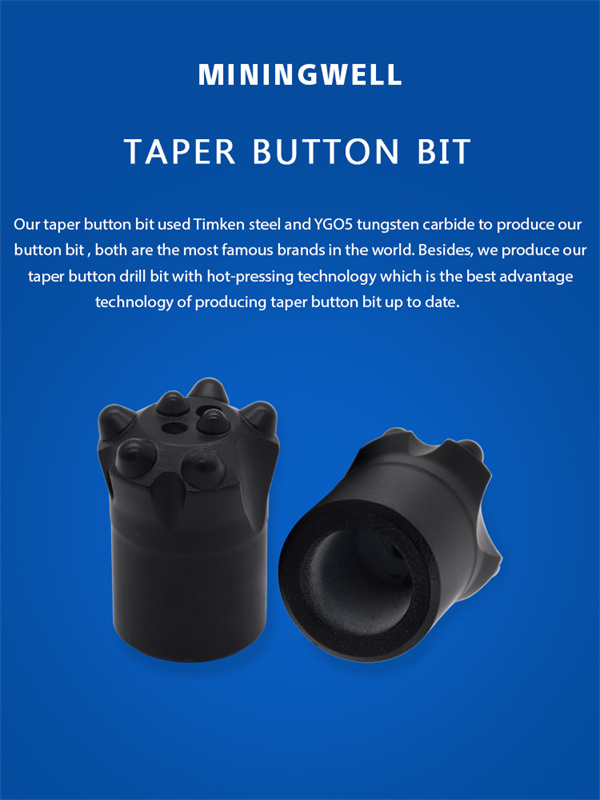
1. The choice of mine tapered button bit
According to the nature of the rock, choose the appropriate tapered button bit for cemented carbide mines. Generally speaking, for rock with high hardness, tapered bit provided by alloy with relatively low hardness is selected, otherwise, tapered bit of alloy with relatively high hardness is selected. For extremely hard rock, if the power of the rock drill is high, the three-blade or cross tapered bit can be used. At this time, in order to facilitate unloading, the taper hole of the tapered button bit can be selected at 11° or 12°. For medium-hard rock with good integrity, in order to improve work efficiency and reduce costs, the tapered button bit can be selected.
2. Selection of drill rod
The drill rod should ensure that there is only enough mating surface with the tapered button bit. Under normal circumstances, the depth of the tapered drill rod inserted into the tapered button bit should be ≥25mm, and the contact surface should be as large as possible, and the minimum should not be less than 60%. Therefore, try to use tapered rods whose taper tips are machined by machining. The drill rod used in conjunction with the tapered button bit should be straight to the naked eye, and the impact end face of the drill tail should be flat.
Whether it is a tapered bit or a tapered drill rod, the water hole should be kept clear.
2. Use
When using the tapered button bit and the drill rod, first check whether the drill tail of the tapered drill rod is flat, whether the taper tip and the taper hole meet the requirements, whether the cutting edge of the tapered button bit is damaged, whether the water hole is not unblocked, and whether the air pressure water Whether the pressure is enough, the tapered button bit is strictly forbidden to collide with the alloys between the tapered button bits. When drilling holes, it should be noted that the wind must be light and light, that is, the wind pressure should be drilled with a small amount first, and then the wind pressure can be gradually adjusted to normal after the drilling is stable. When withdrawing the drill, try to reverse the drill and avoid forcibly knocking and pulling as much as possible, so as not to damage the tapered button bit or the drill rod, resulting in early scrapping.
| Technical Parameters | ||||||
| DIAMETER | BUTTONS | FLUSHING | CARBIDE | FACE | ||
| MM | IN | GAUGE NO/ SIZE | FRONT NO/ SIZE | HOLE | PROFILE | PROFILE |
| 32 | 1 1/4″ | 5×7 | 2×7 | IF1G | Parabolic | Flat |
| 36 | 1 13/32″ | 5×8 | 2×7 | 2F1G | Conical | Flat |
| 38 | 1 1/2″ | 5×9 | 2×7 | 1F2G | Conical | Flat |
| 38 | 1 1/2″ | 5×9 | 2×7 | 2F 1G | Conical | Flat |
| 38 | 1 1/2″ | 5×9 | 2×7 | 2F1G | Conical | Flat |
| 40 | 1 9/16″ | 5×9 | 2×8 | 2F 1G | Conical | Flat |
| 41 | 1 5/8″ | 5×9 | 2×8 | 2F1G | Conical | Flat |
| 41 | 1 5/8″ | 5×9 | 2×8 | 2F 1G | Parabolic | Flat |
